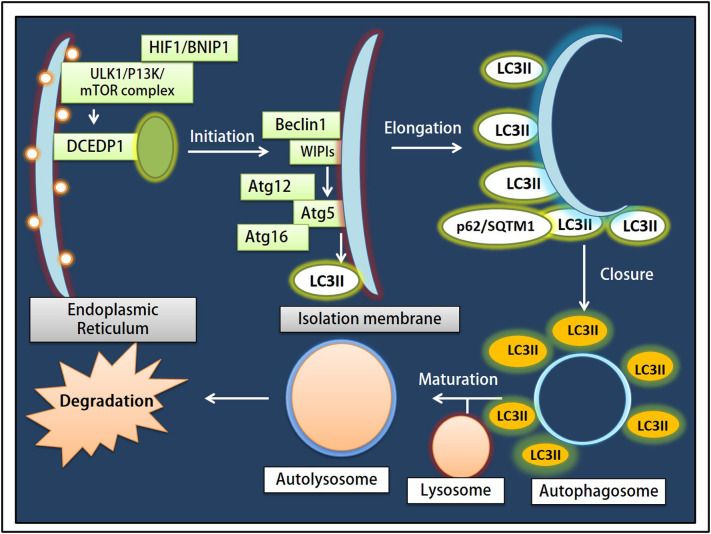
Autophagosome markers are molecular tools used to identify, localize autophagosomes and evaluate autophagic activity, serving as core components in studying autophagic mechanisms and analyzing autophagic abnormalities related to diseases. As key double-membraned structures in the autophagic process, the formation and dynamic changes of autophagosomes can be accurately tracked via specific markers, thereby revealing the role of autophagy in maintaining cellular homeostasis, responding to stress, and regulating pathological processes (e.g., cancer, neurodegenerative diseases). Common core autophagosome markers include: Microtubule-associated protein 1 light chain 3 (LC3), p62/SQSTM1, Atg family proteins (e.g., Atg5-Atg12 complex, Atg16L1). In addition, lysosomal markers (e.g., LAMP1) are often used in combination with LC3 to verify the fusion efficiency between autophagosomes and lysosomes.
Product List
| Target | Catalog# | Product Name | Reactivity | Application |
|---|---|---|---|---|
Acetyl-Coenzyme A Carboxylase | Acetyl-Coenzyme A Carboxylase Rabbit Monoclonal Antibody | Human | WB,IHC,IF,ICC |
Related Products
Super-sensitive ECL chemiluminescent reagent
References
- An overview of autophagy: morphology, mechanism, and regulation. Parzych KR, et al. Antioxid Redox Signal. 2014. [PMID: 23725295]
- LC3 conjugation system in mammalian autophagy. Tanida I, et al. Int J Biochem Cell Biol. 2004. [PMID: 15325588]
- Formation of the approximately 350-kDa Apg12-Apg5.Apg16 multimeric complex, mediated by Apg16 oligomerization, is essential for autophagy in yeast. Kuma A, et al. J Biol Chem. 2002. [PMID: 11897782]
- Mouse Apg16L, a novel WD-repeat protein, targets to the autophagic isolation membrane with the Apg12-Apg5 conjugate. Mizushima N, et al. J Cell Sci. 2003. [PMID: 12665549]
- Autophagy markers as mediators of lung injury-implication for therapeutic intervention. Vishnupriya S, et al. Life Sci. 2020. [PMID: 32828942]
- Autophagy and metabolism. Rabinowitz JD, et al. Science. 2010. [PMID: 21127245]

